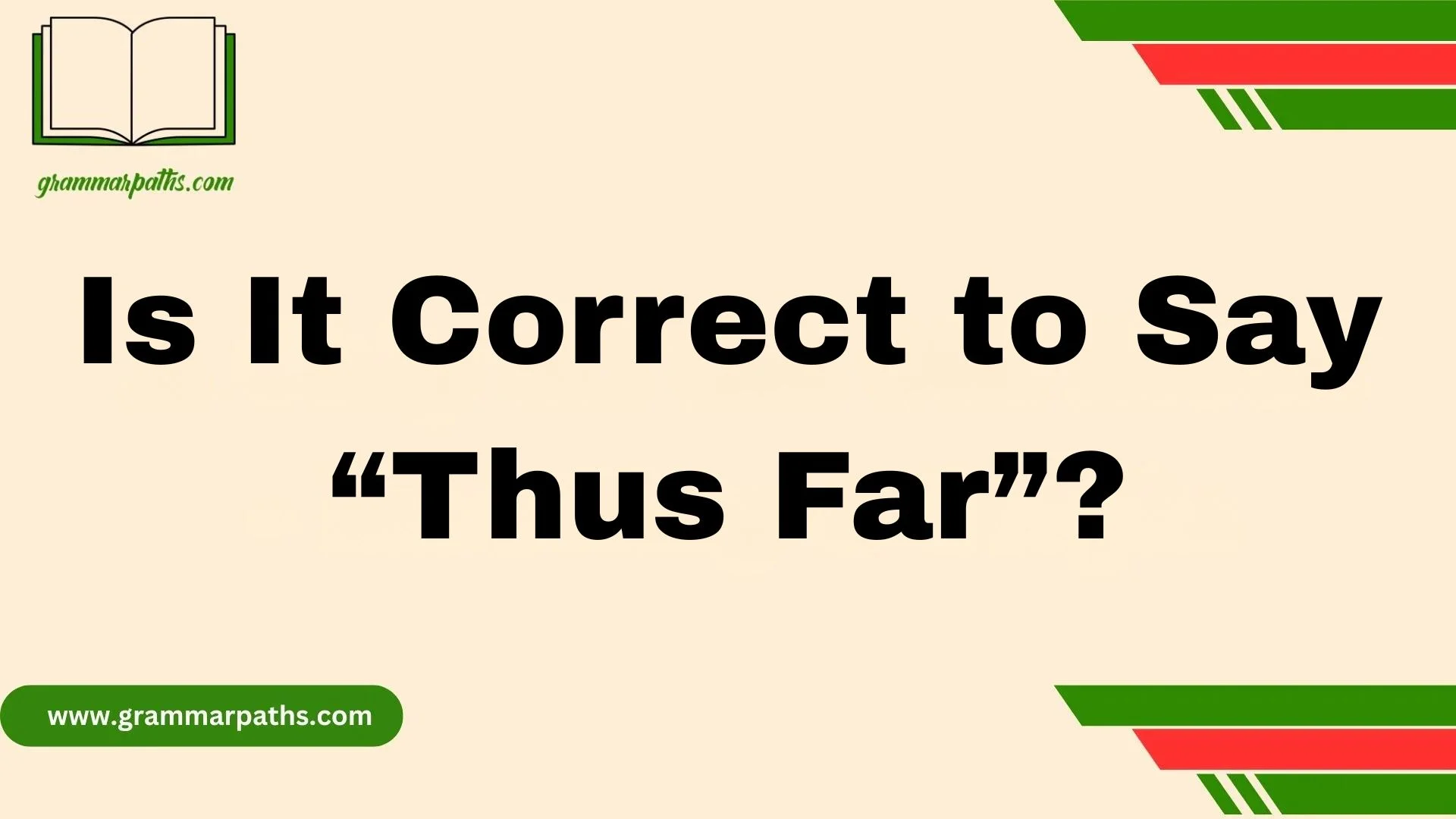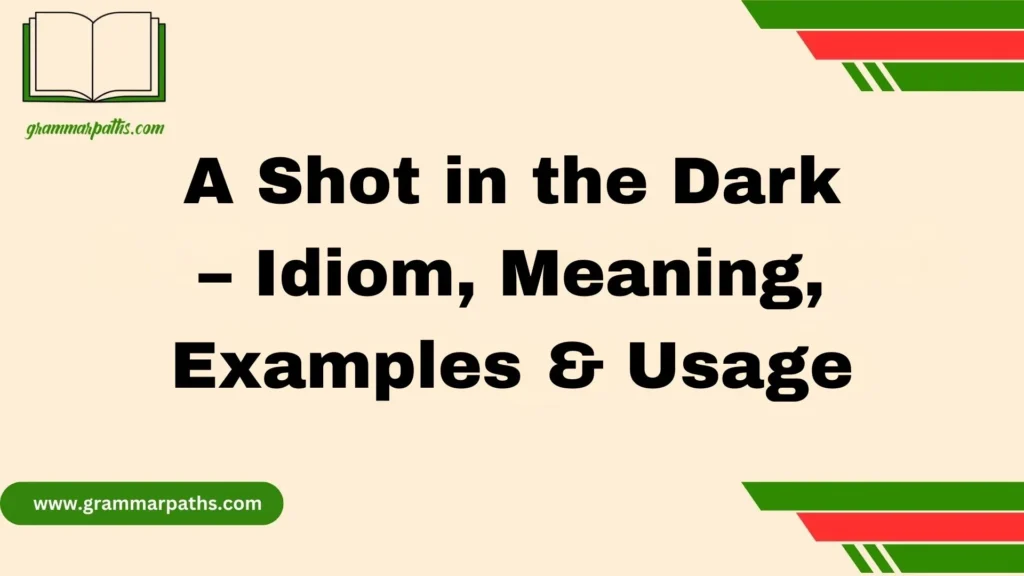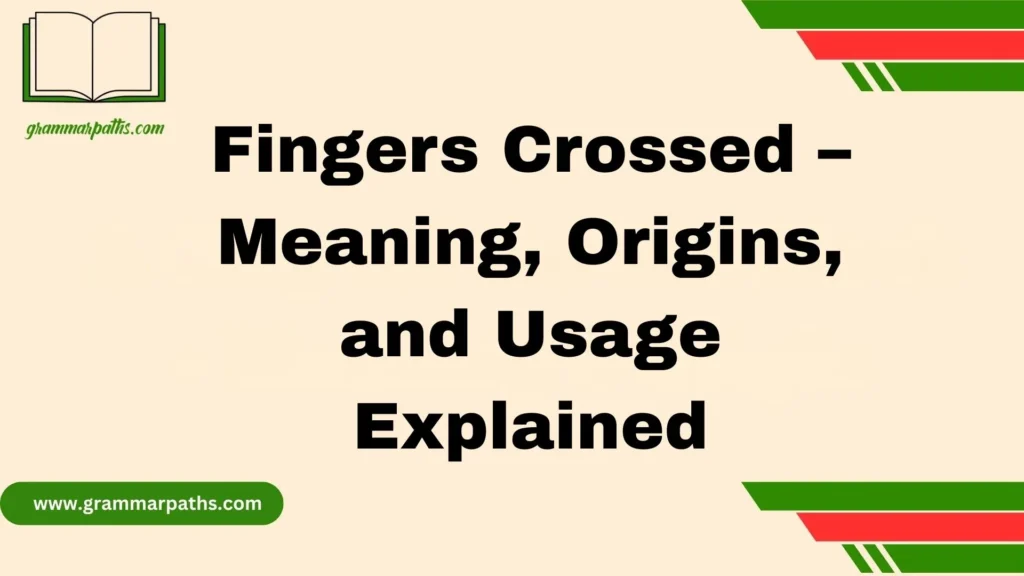In my experience working in boardrooms, drafting emails, and even engaging in casual chats, the phrase “thus far” has always stood out as a surprisingly refined choice in both formal writing and day-to-day conversations. I remember one meeting where a colleague used it mid-speech, and it made the entire tone of the message feel more intentional. That’s the kind of value this phrase brings—it’s not just about grammar, but about the context, the audience, and how you grasp its usage. It’s easy to wonder whether it’s correct when simpler alternatives like “so far” exist, but the short answer is absolutely. What makes the phrase strong is that its meaning has remained consistent for over a century, fitting naturally into books, literary works, and real-life settings.
The beauty of “thus far” is how it functions as a precise instrument in everyday communication. Its strength depends on when and why it’s used—sometimes to add weight, other times just to sound a bit more polished. But like anything, it can be misused if not understood. That’s why it helps to explore real examples, dive into the meaning, and take things step by step. Over time, I’ve come to find that it’s not just about swapping words—it’s about learning how a sentence hinges on clarity. This guide covers not just tips and references, but smart, practical ways to avoid common pitfalls. If you ever feel unsure, take a pause, reflect on the situation, and ask yourself what you want the reader to think or feel. A well-timed “thus far” can break the noise, steer a conversation, and help your words work exactly as intended.
What Does “Thus Far” Mean in American English?
Simply put, “thus far” means “up to this point in time” or “so far.” It’s a phrase that shows progress or something that has happened or been true until now.
The word “thus” means in this way or to this extent, and “far” refers to distance or progress. Put together, “thus far” tells us about how far something has come — not physically, but in terms of time, work done, or development.
For example:
- “Thus far, the project has gone smoothly.”
- “The experiment has yielded positive results thus far.”
This phrase tends to be more formal than “so far,” which you hear a lot in everyday speech.
Is “Thus Far” Grammatically Correct?
Yes, it is! “Thus far” is a perfectly correct adverbial phrase. It usually comes at the beginning or in the middle of a sentence to modify the verb or the whole sentence.
Correct examples:
- “Thus far, we have completed three phases.”
- “The plan has been successful thus far.”
Incorrect example (awkward usage):
- “The results are positive thus far.” (This is okay but less common than the previous examples.)
The phrase has been used correctly for centuries, even appearing in Shakespeare’s works, so it’s solid grammar.
When and How to Use “Thus Far”
You’ll mostly find “thus far” in formal writing and professional speech, such as:
- Academic papers: “Thus far, the data supports our hypothesis.”
- Business reports: “Thus far, sales have exceeded expectations.”
- Legal opinions: “The law has been effective thus far.”
- Scientific research: “No side effects have been observed thus far.”
Avoid using “thus far” in casual conversations because it sounds too stiff or formal. In daily chats, stick with “so far.”
“Thus Far” vs. “So Far”: What’s the Difference?
Both phrases mean almost the same thing — up to this point — but their tone and usage differ.
| Feature | Thus Far | So Far |
| Tone | Formal, academic | Casual, conversational |
| Common contexts | Legal, scientific, business | Everyday conversation, informal writing |
| Frequency | Less common | Very common |
| Example | “Thus far, the findings are conclusive.” | “So far, the trip has been great.” |
Use “thus far” when you want to sound formal or professional. Choose “so far” for casual talks or informal writing.
When Should You Avoid “Thus Far”?
Avoid using it when talking with friends or writing texts or emails that don’t require formality. Saying, “So far, I’m happy with the results” sounds more natural than “Thus far, I’m happy with the results.”
Examples of “Thus Far” in Different Contexts
Business
- “Thus far, the quarterly earnings have met our expectations.”
- “The marketing campaign has been effective thus far.”
Science
- “The research has produced promising data thus far.”
- “No adverse reactions have occurred thus far in the trial.”
Personal Storytelling
- “Thus far, my experience at the new job has been positive.”
- “I haven’t faced any major problems thus far.”
“Thus Far” in Literature and Historical Use
The phrase or similar expressions have appeared in classical literature, including Shakespeare’s plays. For instance, in Macbeth, you’ll find lines that convey progress or outcomes up to a certain point, much like “thus far.”
Using “thus far” in writing can give it a slightly old-fashioned or literary feel, so be mindful of your audience.
Formal Synonyms for “Thus Far”
If you want to vary your writing or speech, here are some alternatives you can use in formal contexts:
- Up to now
- Until now
- To date
- As yet
For example:
“Up to now, the project has been successful.”
“To date, no issues have been reported.”
Common Mistakes With “Thus Far”
- Confusing “thus far” with “this far”
- “This far” refers to physical distance, e.g., “I walked this far.”
- “Thus far” refers to progress in time or achievement.
- “This far” refers to physical distance, e.g., “I walked this far.”
- Overusing “thus far” in informal speech
- Incorrect placement that makes sentences sound awkward
Quick Tips for Using “Thus Far” Correctly
- Use it in formal or written English
- Place it at the start or middle of a sentence
- Don’t confuse it with “this far” (distance)
- Swap with “so far” only when writing or speaking casually
Summary Table: Using “Thus Far”
| Aspect | Recommendation |
| Use case | Formal writing, academic, legal, business |
| Tone | Formal, evaluative |
| Placement | Beginning or middle of sentence |
| Common synonyms | So far (informal), up to now, to date |
| Avoid | Casual conversations, texting |
FAQs
Q1: Is “thus far” grammatically correct?
Yes, “thus far” is completely grammatically correct. It’s often used in place of “so far”, especially in more formal writing or when a refined tone is desired.
Q2: What’s the difference between “thus far” and “so far”?
They mean the same thing, but “thus far” adds a bit more formality or precision. Think of it like choosing a tailored suit over a hoodie—both work, but one is a little more polished.
Q3: Can I use “thus far” in casual conversation?
Absolutely. While it’s more common in professional or literary settings, it can still fit naturally into casual chats—as long as it doesn’t feel forced.
Q4: Is “thus far” outdated or too formal today?
Not at all. It may sound traditional, but it’s still very widely accepted. In fact, it’s used by people who want their message to carry a bit more weight or intention.
Q5: When should I avoid using “thus far”?
Avoid it when the tone of your writing or speech is very relaxed or conversational, and using it might come off as stiff or unnatural for the audience.
Conclusion
At the end of the day, choosing between “thus far” and “so far” isn’t just about picking the fancier phrase—it’s about understanding your tone, your audience, and the context of your message. Whether you’re writing a client report, giving a speech, or just texting a friend, your language should serve your purpose. And “thus far”, when used with intention, can do exactly that. It’s not outdated. It’s not pretentious. It’s just another tool in your language toolbox—a precise, refined, and surprisingly flexible one at that.

Emma Brooke is a passionate language expert and contributor at GrammarPaths.com, where she helps learners navigate the complexities of English grammar, idioms, and effective writing. With a strong academic background and years of teaching experience, Emma excels at turning tricky grammar rules into simple, practical lessons that readers can easily grasp.












